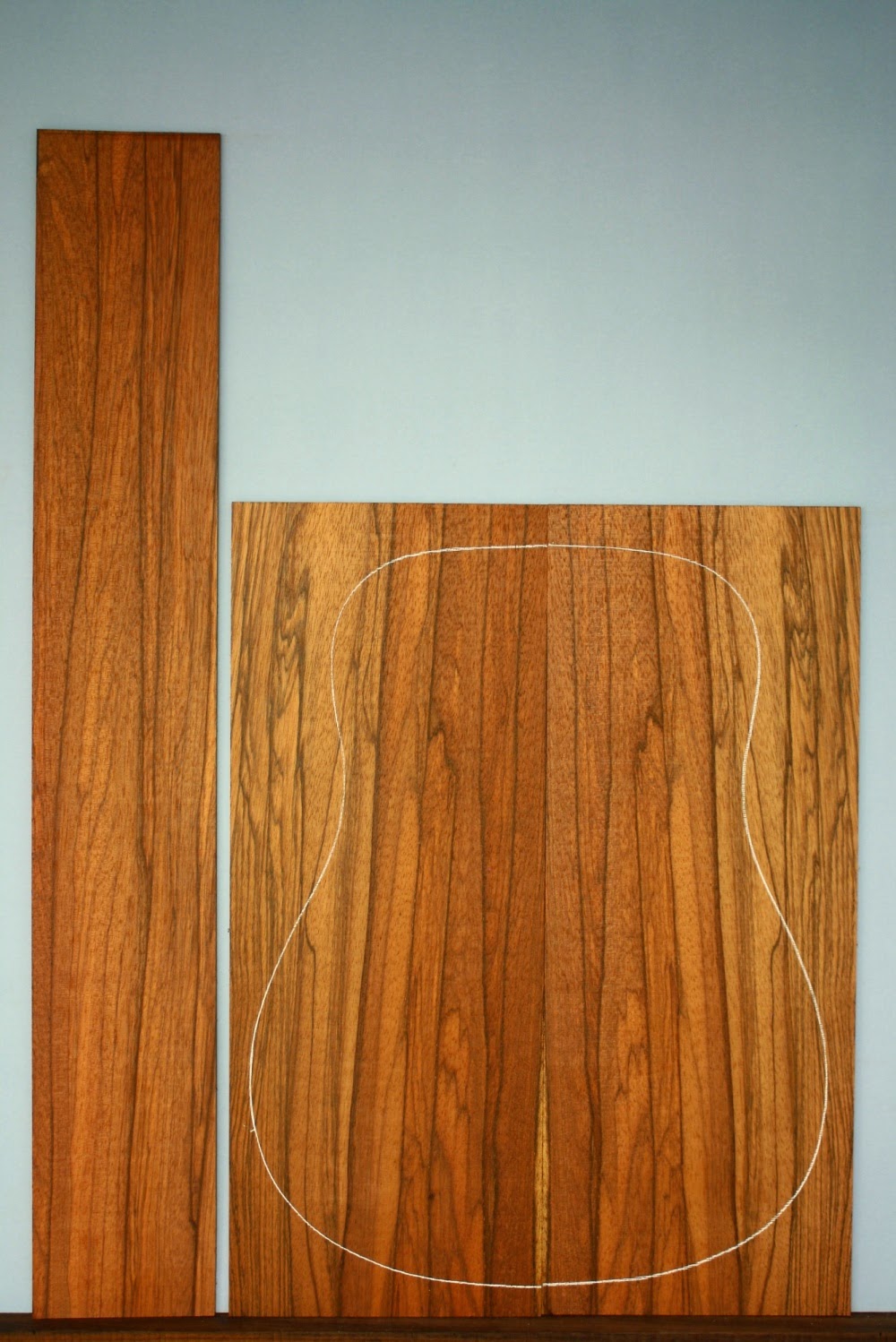Preparing the strips of ebony binding for the headstock can be accomplished gradually in spare moments through the working week, with the more time-consuming task of routing the binding channels, then mitering and installing the strips reserved for a more concerted effort over a weekend. I could probably find time to fire up the laminate trimmer and disc sander on a weeknight, but in a residential setting with neighbours living on either side I figure I'd be pushing my luck. In the interests of suburban harmony, it's probably a wise policy not to disturb them. Note to self: find a quieter shop-vac!
A long-term plan involves leaving the city behind, one of the benefits being that I'll be able to use power tools with far less regard for the noise they generate, comfortable in the knowledge that I'll only be disturbing the local bushland creatures and my patient partner Sandi. Oh, and our chickens of course!
As I described in an earlier post, I find that the tight curve at the extremity of the headstock is best dealt with by thinning the ebony strips to half the required width, then bending them to shape on the bending iron and laminating them into a single full-width piece, with a maple veneer added to what will be the inner surface. Once they're glued in place, it takes a very close inspection to establish that I've used two layers of ebony. Under finish, I'm confident that it will be undetectable.
This is one of many painstaking stages in the construction process, with fabrication of the curved binding strips, then accurate mitering and gluing of each piece adding the best part of a day to the build process, acknowledging that if I was better organised I could be attending to other tasks while I wait for glue to dry. Despite the additional work involved, this treatment of the headstock brings me great satisfaction, assuming of course that everything goes to plan and I'm happy with my workmanship. When I tire of the process, I remind myself that it undoubtedly contributes greatly to the overall aesthetic appeal of the finished instrument. It's just as well I don't build guitars for financial reward however.
Pete















